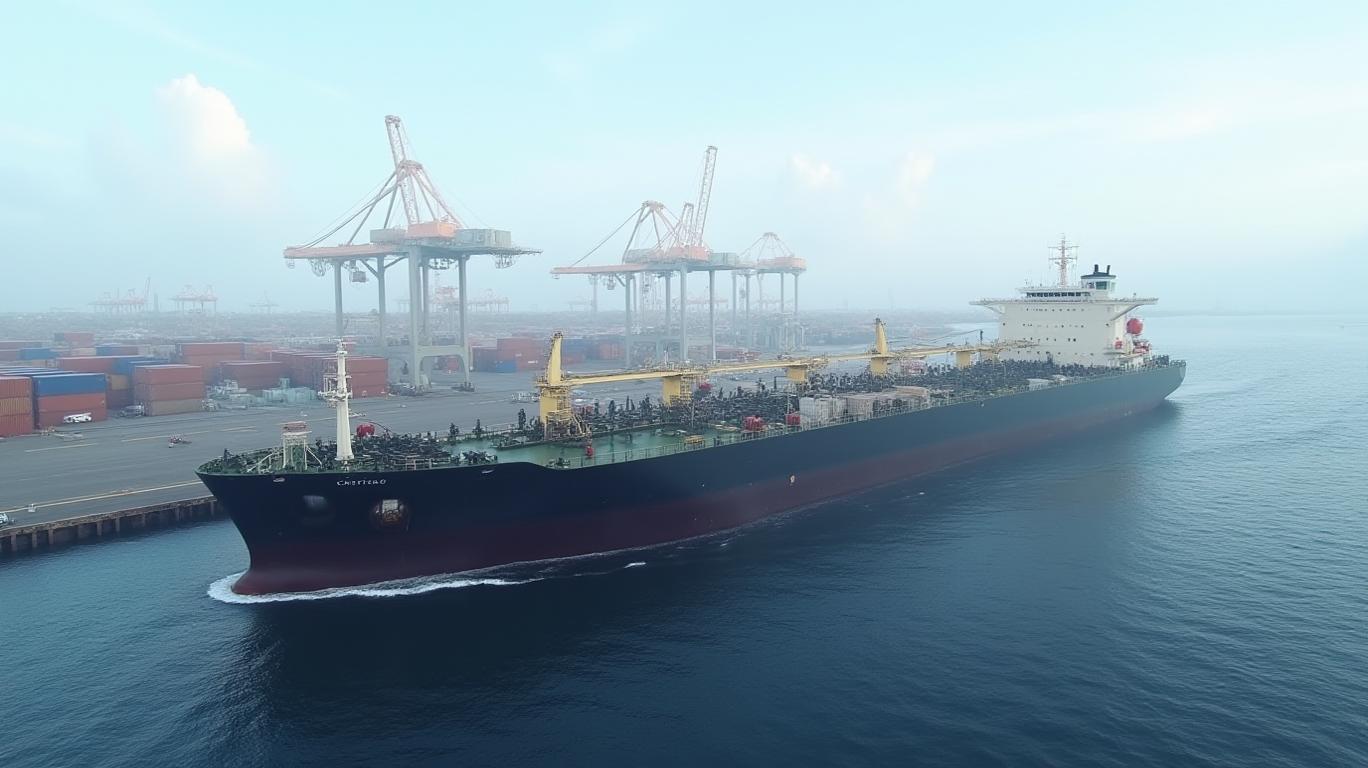Mitsui O.S.K. Lines: Navigating EU LNG Vessel Sanctions and Strategic Opportunities
The European Union’s relentless escalation of sanctions against Russia’s energy sector has thrust Mitsui O.S.K. Lines (MOL) into the crosshairs of a geopolitical storm. With three of its LNG carriers—North Ocean, North Light, and North Moon—sanctioned in the EU’s 17th package on May 20, 2025, the Japanese shipping giant faces immediate operational challenges. Yet, beneath the surface of these risks lies a critical reordering of global maritime logistics, one that could position MOL as a beneficiary of shifting market dynamics.
The Sanctions: A Geopolitical Pivot Point
The EU’s sanctions target not only Russian vessels but also international operators like MOL that enable Russia’s “shadow fleet.” By freezing port access and services for these ships, Brussels aims to strangle Moscow’s energy revenue, which has already dropped by €38 billion since 2022. For MOL, the immediate consequence is the potential stranding of $1 billion invested in its “North-series” LNG fleet, two of which (as of May 2025) were en route to Asian markets with cargoes from Russia’s Yamal LNG project.

The sanctions also expose a critical vulnerability: Norway’s permissive stance toward Russian LNG vessels. The North Light’s recent docking in Honningsvåg—a refueling hub for Arctic voyages—has raised red flags about compliance gaps in the EU’s enforcement. As Brussels tightens its net, MOL must now navigate a labyrinth of regulatory scrutiny, divestment pressures, and reputational risk.
Market Shifts: A Window for Strategic Adaptation
Yet, the same sanctions that disrupt MOL’s operations also create asymmetric opportunities. The EU’s actions have slashed Russian crude oil deliveries by 76%, forcing Moscow to rely on fewer, less reliable shipping partners. This creates a vacuum for companies willing to operate in non-sanctioned markets or pivot to non-Russian projects.
MOL’s agility could prove decisive here. By distancing itself from sanctioned vessels and redirecting its fleet toward stable LNG projects—such as Qatar’s North Field or U.S. exports—MOL could capitalize on Asia’s insatiable energy demand. The EU’s Sakhalin-2 exemption until 2026 also leaves room to service Japan’s LNG needs without violating sanctions, a lifeline for regional dominance.
Risks vs. Rewards: A Calculated Play
The risks are stark. Sanctioned vessels may become stranded assets, and MOL’s reputation as a neutral operator could erode if it resists divestment. Norway’s ports, meanwhile, may become geopolitical battlegrounds as the EU’s 18th sanctions package looms.
But the rewards are equally compelling. By exiting sanctioned operations and repositioning its fleet, MOL could emerge as a preferred partner for Western-backed LNG projects. The company’s $1 billion investment in four North-series carriers—including the unsanctioned North Valley—hints at a strategic reshuffle. Should MOL pivot decisively, it could lock in long-term contracts with buyers in Asia, Europe, or the Americas, leveraging its technical expertise in ice-class vessels.
Conclusion: Riding the Geopolitical Wave
The EU’s sanctions on MOL’s LNG carriers are a catalyst for transformation in maritime logistics. While immediate headwinds exist, the reordering of global energy trade offers a rare asymmetric opportunity. Investors who recognize MOL’s potential to adapt—by shedding sanctioned assets, diversifying its portfolio, and aligning with post-sanction energy flows—could secure outsized returns.
The question is no longer whether geopolitics will reshape shipping; it is whether Mitsui O.S.K. Lines can seize the high ground. For those willing to navigate the storm, the horizon holds clear blue waters.

Comments
No comments yet